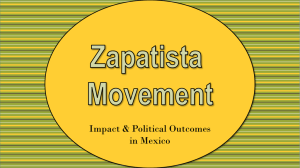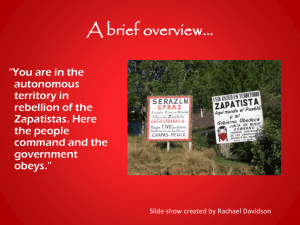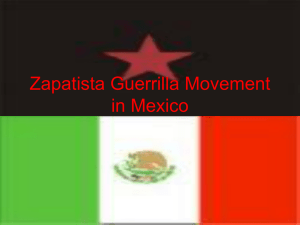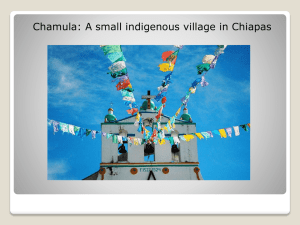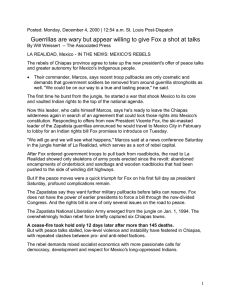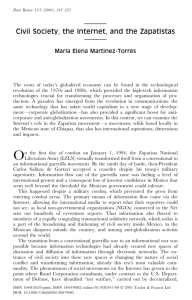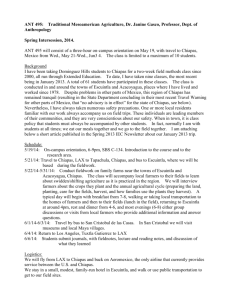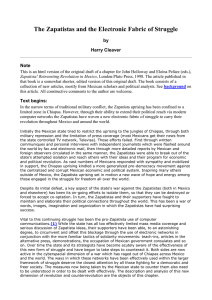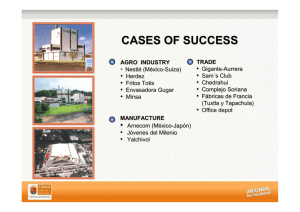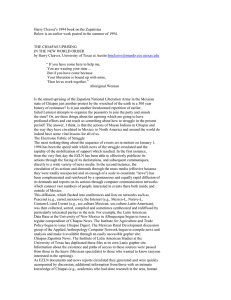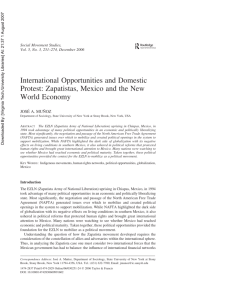Who-are-the-Zapatistas-ppt1
advertisement
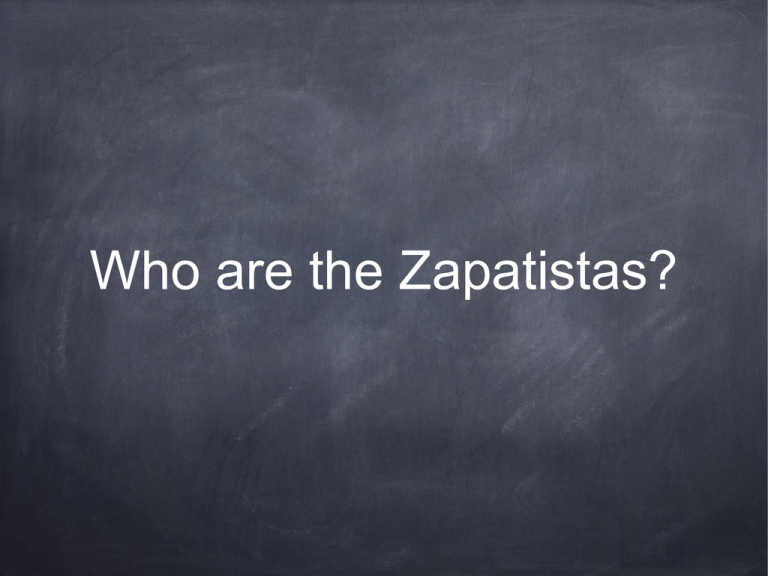
Who are the Zapatistas? -The Zapatistas are a revolutionary movement. -They live in Chiapas, Mexico. -They are mostly farmers, and have a very close relationship with the Earth, which they call ‘Madre Tierra’ or Mother Earth. The People of Corn Corn or maize is the staple diet of the people of Chiapas. Corn is eaten on the cob, milled to make flour from which they make tortillas, and also to make the drink ‘pozol’. For the farmers of Chiapas, corn is life. The Zapatistas are Maya People The Zapatistas are descendants of the Maya. Maya civilization is famous for architecture, art, math and science. It peaked from 2000 BC to 900 AD. 28% of the people of Chiapas speak Mayan languages today. History of Resistance Since the arrival of the Spaniards, the indigenous peoples of Mexico resisted colonization. An estimated 15-20 million people died from killing, forced labour, and disease. Their resistance continued into the twentieth century. The Mexican Revolution The Mexican Revolution began in 1910. In 1911 the dictator Porfirio Diaz was overthrown and replaced by Francisco Madero. The same year, Emiliano Zapata led a revolt of peasants in the south of Mexico. Their motto - ‘The land belongs to those who work it!’ Zapata came to negotiate with the new government but was betrayed and murdered in 1919. The Zapatistas take their name from him. Life in Chiapas In 1993, 15,000 indigenous people died due to poverty and curable illnesses. More than half of the population of Chiapas lives in poverty. Chiapas has the highest rate of illiteracy in Mexico. 60% of homes have no clean drinking water. Most of the land was owned by rich landowners. EZLN In reaction to these conditions, the EZLN (Zapatista National Liberation Army) began organizing in 1983. They had an uprising on 1/1/94 to say ‘¡YA BASTA!’ - enough is enough of these conditions! On this day, the NAFTA agreement came into effect, which would have a terrible impact on the price of corn and the life of the indigenous. What do the Zapatistas want? On 1/1/94 when the Zapatistas had their uprising they issued the First Declaration of the Lacandon Jungle. They directed themselves to the people of Mexico stating: ‘We, the men and women, full and free, are conscious that the war that we have declared is our last resort, but also a just one. The dictators are applying an undeclared genocidal war against our people for many years. Therefore we ask for your participation, your decision to support this plan that struggles for work, land, housing, food, health care, education, independence, freedom, democracy, justice and peace.’ The Conflict The Zapatistas took over five towns in Chiapas. The Mexican Government responded by sending in the army and bombing communities. Twelve days of fighting followed. Hundreds died, mostly indigenous people. The Mexican people called for a ceasefire. The Zapatistas have respected this ceasefire to this day. The Mexican Government responded by continuing to militarize Chiapas. The San Andres Accords The Mexican Government and the Zapatistas came together to negotiate an agreement. On February 16th, 1996, the two sides signed this agreement in the town of San Andres. The Accords promised to respect indigenous culture, the preservation of their natural resources, more participation in decision making, and the right to autonomy. Autonomy The Mexican Government never respected the San Andres Accords. The Zapatistas decided to implement the accords themselves. They called this autonomy. They divided their territory into five centres of administration or ‘caracoles’. They called their new system of government ‘Good Government’. They continue to build their own schools, health clinics, to be independent of the ‘Bad Government’. They believe ‘Another world is possible’. So…what can you do? Visit our website http://www.schoolsforchiapas.org to find out more about the Zapatistas. Explore the page to discover ways that you can support the Zapatistas. Follow Schools for Chiapas on Facebook. Think of ways that you can build a better world!
